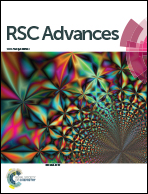Highly modular dipeptide-like organocatalysts for direct asymmetric aldol reactions in brine†
Abstract
A novel series of dipeptide-like organocatalysts derived from proline, amino acids and primary amines have been prepared for direct asymmetric aldol reactions between various aromatic aldehydes and acetone to afford aldol products in good yields (up to 82%) and moderate enantioselectivities (up to 67% ee) with only 1 mol% of catalyst-loading in brine. Under the same conditions, the direct asymmetric aldol reactions of aromatic aldehydes and cyclohexanone give aldol products with high yields (up to 91%) and moderate to good enantioselectivities (up to 88% ee) and excellent diastereoselectivities (up to 99% dr). These organocatalysts are easily synthesized from commercially available materials in multi-gram scale with high modularity in their structural and stereogenic properties.


 Please wait while we load your content...
Please wait while we load your content...